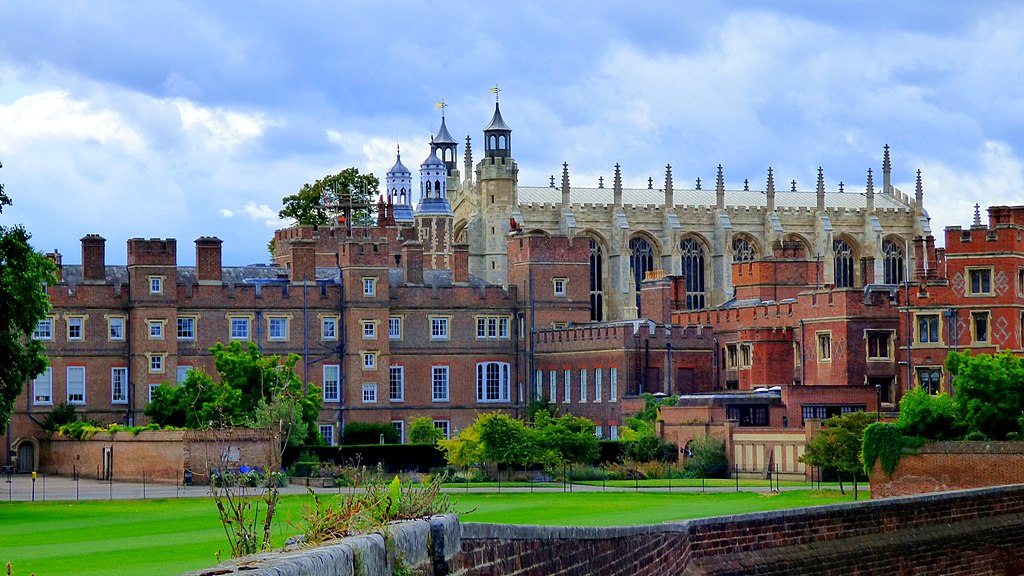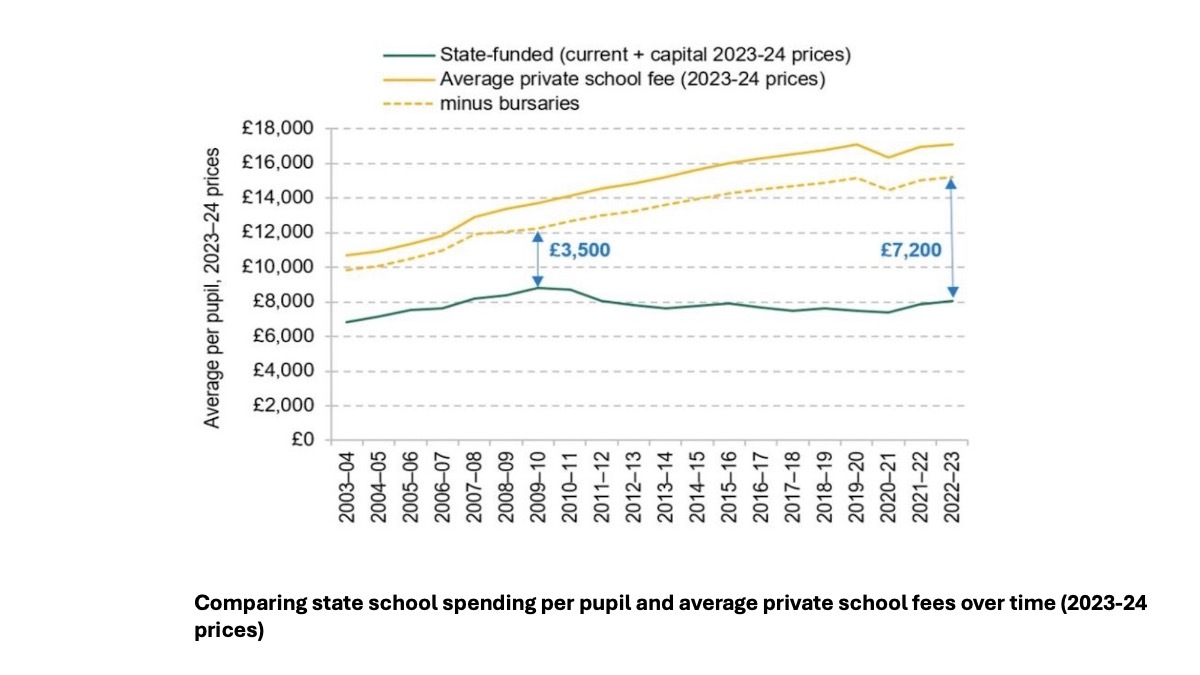
Since Labour announced their plans to either remove the charitable status of private schools, or add VAT to school fees, social media and right-wing outlets have been awash with people claiming it wouldn’t raise any money in reality, or it would cause untold private schools failing and ‘flooding’ the state sector with students. I thought I’d take a look at the issue and see if these doomsday scenarios stacked up.
Most private schools are classified as charities and therefore benefit from tax breaks such as:
- 80 per cent reduction in business rates
- Gift aid
- No tax payable on ‘profits’
- No tax payable on their investment income
- Covid Loans
Most state schools (‘academies’ are treated differently from others) don’t benefit from these tax breaks for various reasons.
Charities, and therefore private schools, only pay 20 per cent of their business rates, which is thought to deprive cash-strapped local authorities of £144 million per year. Scotland removed this tax break from independent schools at the start of 2022, so it’s certainly possible to do. It’s worth noting that certain specialist schools were exempt from this change.
Private schools can also benefit from being able to claim gift aid on any donations, as can the donor! Let’s say you wanted to donate £100,000 to your old school, and were a top rate tax payer. [Sunak]The school would be able to claim an additional £25,000 in gift aid from the tax-payer, and you would also be able to reclaim £31,250. Donate £100,000 to your local primary school and it actually costs you £100,000, so probably not worth it – just donate a £10 bottle of wine instead! [Also Sunak…] Parent-Teacher Associations can register as charities and claim gift aid, but they are only allowed to raise money for specific things, and not for the running costs of the school.
While charities aren’t allowed to make a profit, for many private schools, in practice this means they can make a nice surplus which then goes towards a new swimming pool, theatre, upgraded science equipment and so on. They don’t pay tax on any of the surplus, even if it’s sitting in a bank account.
Many private schools also have investment portfolios, and again, they don’t pay any tax on the income from these portfolios. In fact, there’s a nice tax loophole for the super-rich whereby they pay all their fees upfront, the school invests the lump sum, gets the returns tax-free, the parent receives a discount and once their child leaves, the school and parent split what’s left.
And during the Covid-19 Pandemic, private schools were eligible to apply for loans, with the government covering the first year’s interest payments, which state schools could not apply for. Just another example of private schools benefiting financially from their charitable status, while state schools missed out.
The reason for all these tax breaks is down to the fact they are classed as charities. So, what is it that they do to warrant that status?
A recent report found that far from benefitting their local communities, the charitable activities of the private schools were pretty paper thin. The report found that only one per cent of state schools reported partnership activities aimed at disadvantaged pupils. Half the schools involved in partnership events reported that these were only targeted at high-attaining pupils and were often a marketing and recruitment exercise for the private school. Many pupil events were fairly superficial, like attending a private school’s theatre performance, or joint carol singing. Only three per cent of partnerships involved borrowing facilities and only one per cent benefitted from staff secondments.
While around a third of private school pupils receive some form of discount on their fees, in the form of scholarships, sibling discounts and bursaries, only one per cent of privately educated pupils who come from the most disadvantaged backgrounds, receive a 100 per cent bursary. A far cry from the origins of these types of schools being set up by philanthropists to provide education for the poor!
So, what about claims concerning the effects that removing tax breaks or adding VAT would have on the schools, the pupils and the state sector?
The Institute for Fiscal Studies (IFS) has written a comprehensive report into this subject. It found that adding VAT to school fees would lead to a net increase of 15 per cent, after VAT deductions had been taken off. This 15 per cent could be passed on to parents, but it is also possible that the schools could go some way to absorbing some, if not all the costs, at least at the start. They could lower the fees so parents ended up paying the same as they do now. They could save money by increasing class sizes, hiring out amenities, dipping into their investments, asking for donations from families who could afford it, or even holding off refurbishing the swimming pool! (I’m being flippant, but you get the idea).
It’s worth noting, that the top private schools increased their assets by 44 per cent from 2015-2020, so I’d suggest there’s a bit of wriggle room available.
Obviously, not all schools are Eton or Winchester, and not all parents are rich, but it is all relative. The overwhelming majority of private school parents fall into the top 10 per cent income bracket. In general, if you can afford £15,000 for school fees from your taxed income AFTER paying all your bills and necessities, you will likely be able to find an extra £2250 per year. And if you can’t, you’d like to think the schools will help, rather than lose the child.

The biggest myth is that a VAT increase would lead to a mass exodus into the state sector. The IFS investigated this. Over the last 20 years, fees have risen by 55 per cent but despite this, the private school population has remained very stable at six to seven per cent of the total, as there is lots of evidence to suggest that drivers of this choice are far wider ranging than simply the cost. The IFS calculated that adding VAT to school fees may lead to between three and seven per cent of pupils moving into the state sector.
To put this into perspective, there are 9.1 million school aged children in England, with around 560,000 children in private education. Even if seven per cent of those moved into state schools, and they’d be unlikely to move en masse, that would be around 40,000 children. Last year, our state schools found space for more than 41,000 refugee children from Ukraine, Hong Kong and Afghanistan.
The IFS also highlighted that our state school population is set to fall by 100,000 per year over the next seven years, which is more than enough to absorb every private school child and then some.
Since 2010, the difference between what is spent on a child in the state sector and one in the private sector has more than doubled, with private school children having nearly twice as much spent on them as their state school counterparts. This does somewhat highlight the hypocrisy of anyone claiming private schools couldn’t possibly survive if they had to take a 15 per cent hit to their finances.

In the report, the IFS calculated that adding VAT onto school fees and removing the charity tax breaks would create a net gain to the tax payer of £1.6 billion (even taking into account the cost of having to absorb that seven per cent of children into the state system). That’s not a trivial amount.
This is an emotive subject, with many people personally invested in it. There are accusations of ‘politics of jealousy’ from those on the right and demands to abolish private schools by many on the left. And for full disclosure, I spent five years at boarding school, and one of my children spent three years at a local private school. This isn’t about either jealousy, or a desire to abolish private schools altogether. People have the right to decide how they spend their money. They have a right to decide to put their money towards paying for a better education for their children. But they aren’t functioning as charities and the British taxpayer also has the right not to subsidise them as if they were.
Private schooling is a luxury only afforded to seven per cent of our children. Their parents may save up and forgo luxuries to find those fees, but for the majority of the other 93 per cent, no amount of saving, and doing without Netflix, will enable that sort of money to be found. At present, 24 per cent of children are eligible for free school meals – their parents forgo luxuries just to feed and clothe their children.
When you look at the facts in the cold light of day; Labour’s plan will raise much needed money at a time when state schools are quite literally crumbling. It will not lead to a mass exodus or overwhelm the state sector, and when even Michael Gove thought taxing private schools was a good idea, it’s hard to argue against it.




